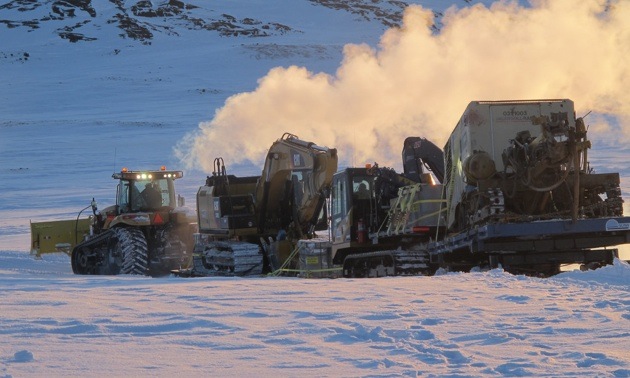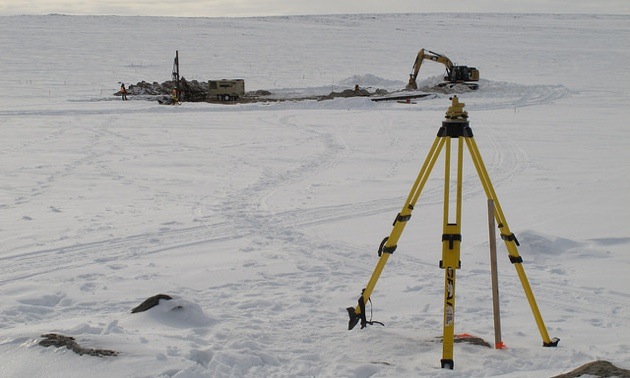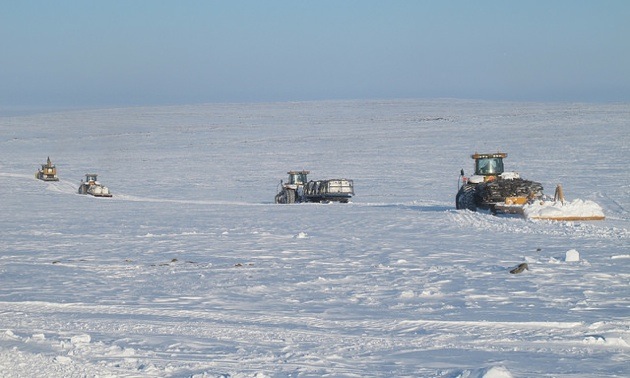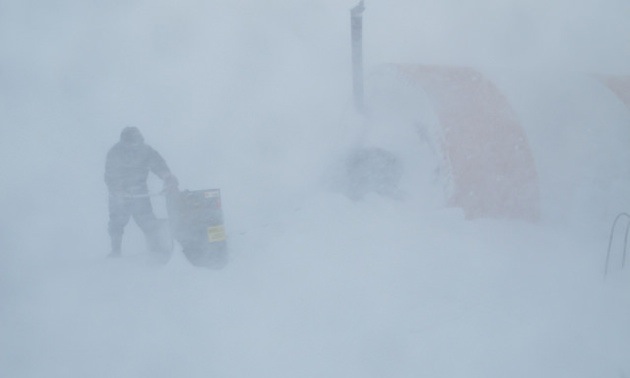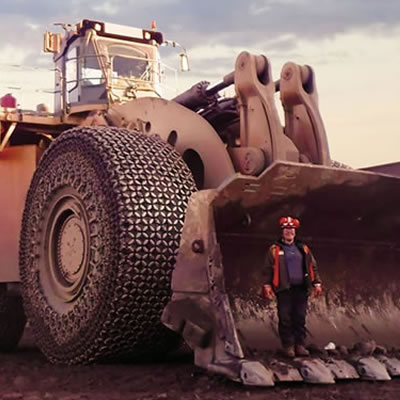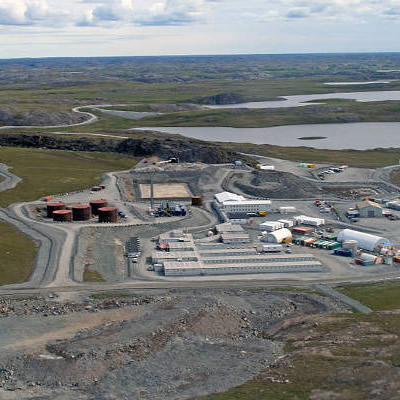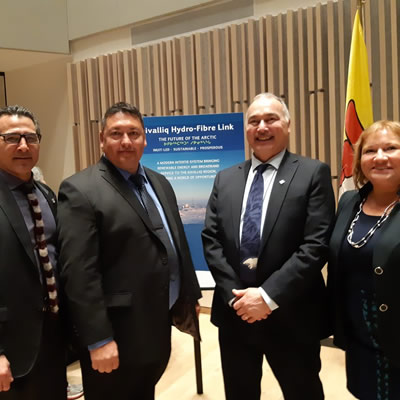Peregrine Diamonds: where the ice trail leads
It took innovation, technology and advice from local Inuit to access a remote site on Baffin Island to obtain material samples
Mining companies in Canada’s North incur time and financial costs unlike anywhere else in the country. Inclement weather and rugged terrain inhibit access, and the lack of infrastructure means innovation takes a different form in Canada’s most remote lands.
When it comes to battling the forces of nature, the most important innovation in the struggle between humans and the northern elements has been the ice roads, said Tom Hoefer, executive director of the Northwest Territories (N.W.T.) & Nunavut Chamber of Mines.
“It’s a real success story of using winter to your advantage,” Hoefer said of the long stretches of lonely thoroughfare traversing water, snow and ice.
Paving the way to exploration
Hoefer said the 450 kilometres of ice road in that region has a two-month window, a reality that requires companies to think and operate a year in advance and prepare for stages of development that haven’t yet occurred and that may still be subject to permitting.
“They build it at the company’s own cost and load in an entire year’s worth of infrastructure material, which also requires extra storage on site,” Hoefer said. “Add that to the cost of generating their own power—usually through diesel—and providing a camp accommodation system that includes food and supplies.”
Higher costs mean only the highest grade deposits undergo development; better infrastructure could make lower grade deposits economically viable.
“Companies are challenged to find ways to bring the price down to mine these deposits,” said Hoefer. “Fifty years ago, building on ice meant someone would drill a hole, guess there was about three feet of ice and give the go-ahead.”
Contemporary ice roads are engineered using a light vehicle that pulls ground-penetrating radar (GPR) to determine the ice thickness.
“These are highly engineered roads,” Hoefer said. “(The engineers) know the bearing of the size of trucks and the exact requirements. Without (the roads), we wouldn’t have diamond mines.”
The trail to Baffin Island
Peregrine Diamonds Ltd. has three diamond properties in the Arctic—on Baffin Island in Nunavut, the Chidliak and Qilaq projects represent more than 800,000 hectares, and Nanuq covers 156,946 hectares 300 kilometres north-northeast of Rankin Inlet. Just 27 kilometres from the Diavik Diamond Mine in the Northwest Territories is Peregrine’s Lac de Gras project.
In 2013, Peregrine Diamonds completed a bulk sampling of CH-6, one of the higher grade kimberlites out of 67 discovered at the Chidliak site.
To help develop a trail from the site to Iqaluit to transport the sample material, Peregrine hired Nuna Logistics—a company with offices in Vancouver and Edmonton that does work throughout northern Canada building ice roads.
“The trail had to get heavy equipment in from Iqaluit to camp, which is 120 kilometres by air and 175 kilometres by land,” said Alan O’Connor, Chidliak’s project manager. “They were out there in late January when it was -30 or -40 degrees Celcius.”
Key to developing the trail was engaging Inuit hunters with traditional knowledge of what attributes the trail needed to be successful.
“We wanted to be sure it was a good route and one (that) hunters and trappers know,” said O’Connor. “They had to be sure the trail wasn’t too rough or steep, and that it had sufficient snow coverage.”
The team left from Iqaluit and scouted the trail.
“It took a couple of weeks in cold weather that left some of the team members frostbitten in a few places,” said O’Connor. “They relied on the hunters’ knowledge and one of Nuna’s highly experienced employees to scout the trail, and used a GPS to map it so they could follow it later.”
Before driving the trail with heavy loads, Nuna dragged GPR behind a vehicle to track and confirm the ice thickness, which was then directly calibrated using an ice auger.
“We used Challengers to haul equipment on sleds because they have really low ground pressure so they distribute their weight,” said O’Connor. “Nunavut Excavating, a subcontractor to Nuna based in Iqaluit, excavated the trench and in a few days had all the kimberlite sample material placed in a stockpile beside the trench.”
The sample material was bagged in one-tonne bags using a smaller Cat Multi Terrain loader, and 516 bags were filled in less than a week. Four Challengers did 11 sample haul trips over the 175-kilometre trail—the shortest of which was completed in eight hours.
For safety, the convoy used Nano trackers, small tracking devices, in one of the Challengers to relay signals about the machine’s location to the office or camp every 10 minutes. The Nanos also provided email and texting capability, and the convoy carried satellite phones and VHF radios in case there was trouble.
“We’ve shown this past winter we can do large programs using a trail to link Iqaluit and the project site,” said O’Connor.
Boosting fuel efficiency
Three companies in the North are experimenting with wind power and discovering whether the region has enough of it to significantly offset their power requirements. Diavik, for instance, has constructed a $31-million wind-diesel hybrid power facility on Lac de Gras. The facility reduces the mine’s annual diesel requirements by 3.8 million litres and provides 8.5 per cent of the mine’s power needs.
Heat recovery has also become the standard in mining developments, said Hoefer. Most commonly, companies generate power with diesel, he said, which, without heat-recovery technology, only runs at about 35 per cent efficiency.
“We have to pay a lot at a mine site, so fuel is dear to us,” Hoefer said. “With building heat recovery, we can recover heat from the smoke stacks and engines and use it to heat the plant buildings. This has diesel running 75 per cent efficient.”
Technology in the sky
Peregrine Diamonds is looking to the future with an eye on utilizing drone technology to acquire geophysical survey data and air photography. Aircraft flown remotely—using GPR to collect data using a laser system to record elevation—can fly cheaper and closer to the ground, thus opening up exploration possibilities.
Current Canadian flight regulation poses an issue for drone technology, however, because the vehicles are unable to respond to an emergency independently.
“In some areas of Canada there is no flight tracking, so when the pilot goes flying out of Iqaluit and is 10 miles out, he’s on the radio or using visual cues to see someone flying nearby,” said O’Connor. “Traditionally, industry uses airplanes and helicopters to do airborne surveys, but there is the potential for having drones do it. It would be less expensive.”

